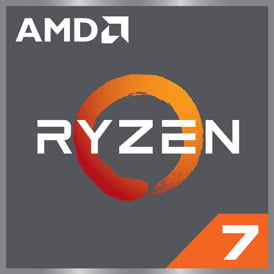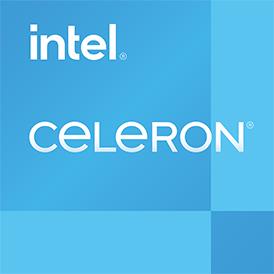 Geekbench 3, 64bit (Multi-Core)
Geekbench 3, 64bit (Multi-Core)
|
|
AMD Ryzen 7 2700
8C 16T @ 3.2 GHz
|
23660
|
|
|
Intel Celeron J3455E
4C 4T @ 1.5 GHz
|
2175
|
 Estimated results for PassMark CPU Mark
Estimated results for PassMark CPU Mark
|
|
AMD Ryzen 7 2700
8C 16T @ 3.2 GHz
|
15740
|
|
|
Intel Celeron J3455E
4C 4T @ 1.5 GHz
|
2255
|
 Geekbench 5, 64bit (Multi-Core)
Geekbench 5, 64bit (Multi-Core)
|
|
AMD Ryzen 7 2700
8C 16T @ 3.2 GHz
|
6252
|
|
|
Intel Celeron J3455E
4C 4T @ 1.5 GHz
|
1224
|
 Geekbench 6 (Multi-Core)
Geekbench 6 (Multi-Core)
|
|
AMD Ryzen 7 2700
8C 16T @ 3.2 GHz
|
5876
|
|
|
Intel Celeron J3455E
4C 4T @ 1.5 GHz
|
874
|
 Geekbench 3, 64bit (Single-Core)
Geekbench 3, 64bit (Single-Core)
|
|
AMD Ryzen 7 2700
8C 16T @ 3.2 GHz
|
4400
|
|
|
Intel Celeron J3455E
4C 4T @ 1.5 GHz
|
1260
|
 Cinebench R15 (Multi-Core)
Cinebench R15 (Multi-Core)
|
|
AMD Ryzen 7 2700
8C 16T @ 3.2 GHz
|
1529
|
|
|
Intel Celeron J3455E
4C 4T @ 1.5 GHz
|
93
|
 Geekbench 6 (Single-Core)
Geekbench 6 (Single-Core)
|
|
AMD Ryzen 7 2700
8C 16T @ 3.2 GHz
|
1219
|
|
|
Intel Celeron J3455E
4C 4T @ 1.5 GHz
|
292
|
 Cinebench R15 (Single-Core)
Cinebench R15 (Single-Core)
|
|
AMD Ryzen 7 2700
8C 16T @ 3.2 GHz
|
164
|
|
|
Intel Celeron J3455E
4C 4T @ 1.5 GHz
|
50
|
 iGPU - FP32 Performance (Single-precision GFLOPS)
iGPU - FP32 Performance (Single-precision GFLOPS)
|
|
Intel Celeron J3455E
4C 4T @ 1.5 GHz
|
134
|
 Cinebench R11.5, 64bit (Multi-Core)
Cinebench R11.5, 64bit (Multi-Core)
|
|
AMD Ryzen 7 2700
8C 16T @ 3.2 GHz
|
16.8
|
|
|
Intel Celeron J3455E
4C 4T @ 1.5 GHz
|
1.1
|
 Cinebench R11.5, 64bit (Single-Core)
Cinebench R11.5, 64bit (Single-Core)
|
|
AMD Ryzen 7 2700
8C 16T @ 3.2 GHz
|
2.0
|
|
|
Intel Celeron J3455E
4C 4T @ 1.5 GHz
|
0.6
|

